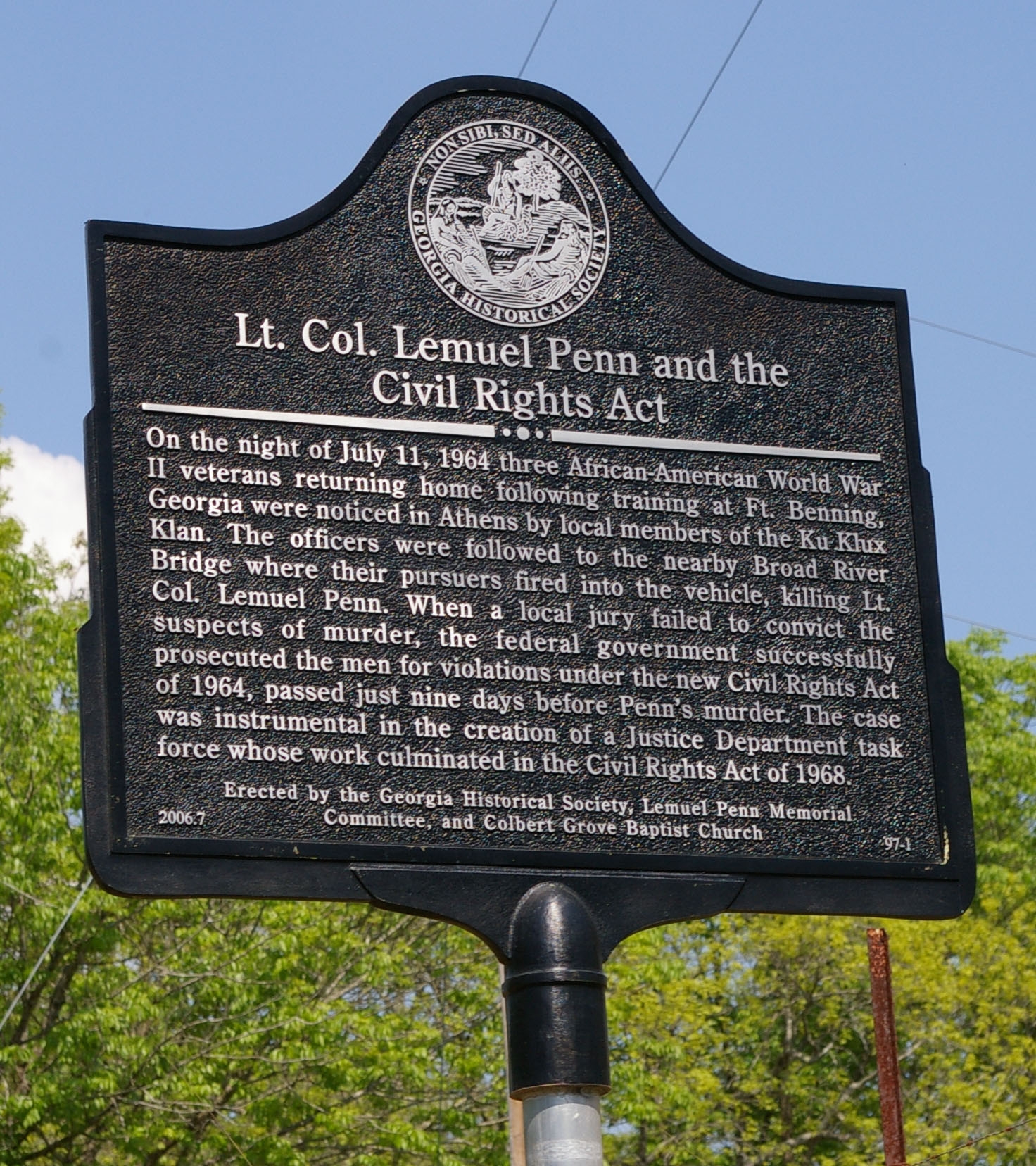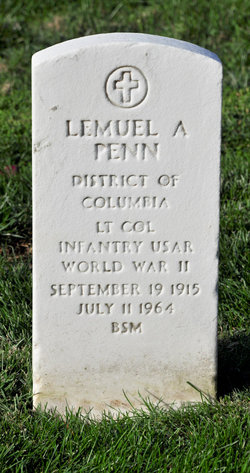 |
| Photo by David Seibert via HMdb.org |
As you likely (and correctly) surmise, the Klan was unprovoked and the jury that failed to convict was all white.
Lemuel Penn rests at Arlington Cemetery.
"NEGRO HERO
Educator Buried in Arlington
WASHINGTON (UPI) -- Lemuel Augustus Penn, Negro educator who was slain by a sniper's shotgun blast as he drove through Georgia, was buried Tuesday with full military honors at Arlington Cemetery, the nation's resting ground for its heroes...
 |
| Photo by John Evans via FindAGrave |
According to the two Reserve officers accompanying Penn, the unexplained and apparently unprovoked shooting was done by a man who drove alongside their car in a rural section of the state, fired twice, then fled. Authorities assume the slaying was racially motivated.
Penn,...is survived by his wife Georgia and three children,...
During the services in the hot, crowded church, the Rev. Stanford J. Harris said Penn was a 'casualty of our battle against bigotry' and his death a reflection of the 'cancerous prejudice eating away at American democracy.'..." [Dallas Morning News (Texas), 15 July 1964, pg. 8 via GenealogyBank.]
Comments